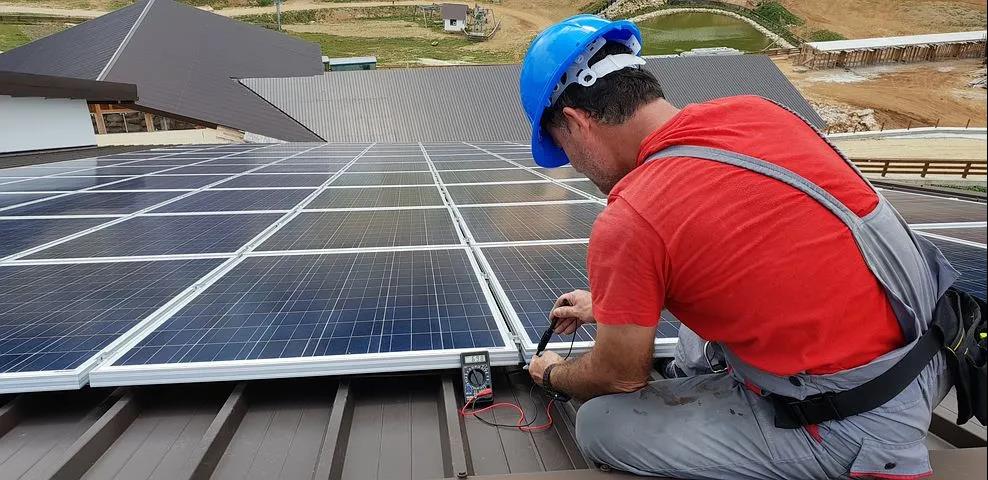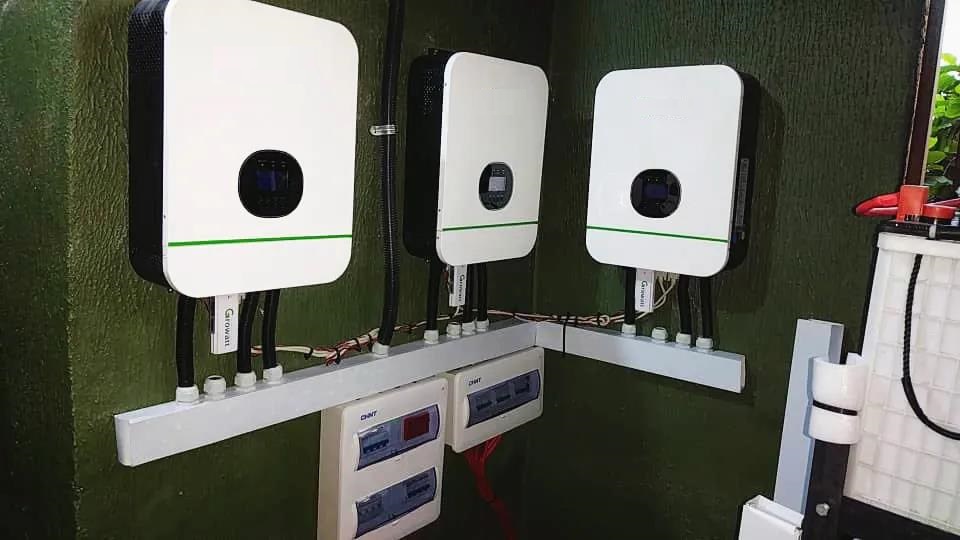- Plant by plant decommissioning strategy of coal power in China,soalr power will be the replacer
- Forecast of PV installations in 2021
- The thing that should be paid attention to when installing photovoltaic off-grid system
- The demand for photovoltaic projects in emerging countries is growing rapidly and the industry is recovering.
- Will Europeans look to solar power air conditioners to relieve the heat?
The thing that should be paid attention to when installing photovoltaic off-grid system
After installation of each part of the PHOTOVOLTAIC system, before starting the operation of the inverter, check whether each part is installed correctly, whether the connection is firm, whether there is wrong connection or missed connection, etc. After confirmation, boot can ensure the safety of the system and prevent accidents.

Preparation tools: electric pen, wrench, multimeter, ammeter, insulation resistance meter, etc.
Installation inspection procedure
1 check the structural parts
Mainly check whether the bracket is firmly connected, tighten the screw with a wrench, to see whether it is tightened, there is no leakage installed, inverter and distribution cabinet is firmly installed.If the number of batteries is more, it is recommended to match the battery rack, pay attention to the load bearing and insulation.The inverter should be installed on a solid wall, the most suitable height is the same height of the display screen and the line of sight, the inverter should be left around a certain amount of space, convenient for the inverter heat dissipation and movement.
Check the electrical part
Check whether the PHOTOVOLTAIC DC cable is damaged and whether the joint is firm. Use a multimeter to check whether the voltage of the group string is normal.Before operation, the total voltage of the series is equal to the sum of the voltages of each component, and the voltage of each circuit in parallel is basically the same, and whether the positive and negative poles of the component are connected in reverse.Where conditions allow, an insulation resistance meter may be used to measure the insulation resistance of the assembly to the ground, the insulation resistance of the ac line fire line and the zero line to the ground.
3.Check the battery
Battery before leaving the factory, generally will charge, so to detect the voltage of the battery is normal, if the battery for a long time, will be slowly put out.When multiple batteries are connected in series and parallel, it is necessary to test whether each battery connector is firm. Off-grid system voltage is 12V, 24V, 48V, 96V and other kinds of applications, some applications need multiple batteries in series to meet the system voltage;If the connection cable is not done properly, the battery voltage will also be insufficient.Pay attention to the battery terminal do not connect the opposite, the battery terminal has positive and negative poles, generally red connection positive, black connection negative. Note that there will be a small amount of sparks if the wiring is live.
Commissioning procedures
The photovoltaic off-grid energy storage system, different from the grid-connected system, generally needs debugging before operation. The main reason is that the off-grid project customer's requirements are diverse, and the inverter has also set a variety of application scenarios for the user to choose.
1. Automatic test after startup
After the off-grid inverter is connected to the battery, it starts to operate. The inverter itself is first detected, and then the module voltage, DC insulation, battery, AC voltage and so on are detected. After all the normal operation, the inverter starts, ac begins to have output, ac load is started, and AC part mainly detects output current, etc.
2.inverter setting
In the off-grid system, there are three modes of load power consumption: power supply, battery priority and photovoltaic;There are also four modes of battery charging, namely, municipal power charging, photovoltaic charging, municipal power and photovoltaic charging, and photovoltaic charging alone.These modes are set before the inverter runs.Off-grid inverters generally have a dry contact signal, which can be used to start the external generator when the battery power is low. If this function is needed, the battery's low alarm line voltage and the purpose of setting dry contact signal shall be set.

If it is multiple off-grid inverters and parallel machines, it is also necessary to install the function plate of parallel machines. Unlike the grid-connected inverters, off-grid inverters have no automatic phasing function. After the installation of the function plate and signal line, the inverter is started, but does not run first, and a host machine is set, while the rest of the inverters are set as slave machines.The parallel inverter must be connected to the same battery, and the distance between the inverter and the battery should be basically the same to ensure that the inverter flows evenly.
3.monitor
After the inverter is set up, the data collector can be installed. Now the monitoring mode is generally GPRS and WiFi, and the user can choose according to the situation.Register your account and then access the collector. After 10 minutes, you can see the operation data of the inverter from the APP terminal or the computer terminal.The information collected by the off-grid system is relatively large, including the voltage, current, voltage and current of the photovoltaic end, the load end, the voltage and SOC remaining power of the battery, the charging amount and power consumption of the photovoltaic end every day.After the installation of monitoring, you can always remote view the various operating information of the inverter, but also remote set the operating parameters of the inverter, change the operating state of the inverter, some faults can be dealt with directly in the remote, very convenient and practical.
conclusion
The steps before the off-grid operation of the system are as follows: test the structure of the bracket, test the electrical part, connect the battery, self-check the inverter, set the parameters of the inverter, connect the photovoltaic modules, install and monitor, and start up the system.Just a few days before the start of the operation, it is necessary to often look at operating parameters, pay special attention to the battery charging current, voltage, SOC remaining power and other parameters.


 miko@tunto.cn
miko@tunto.cn


























